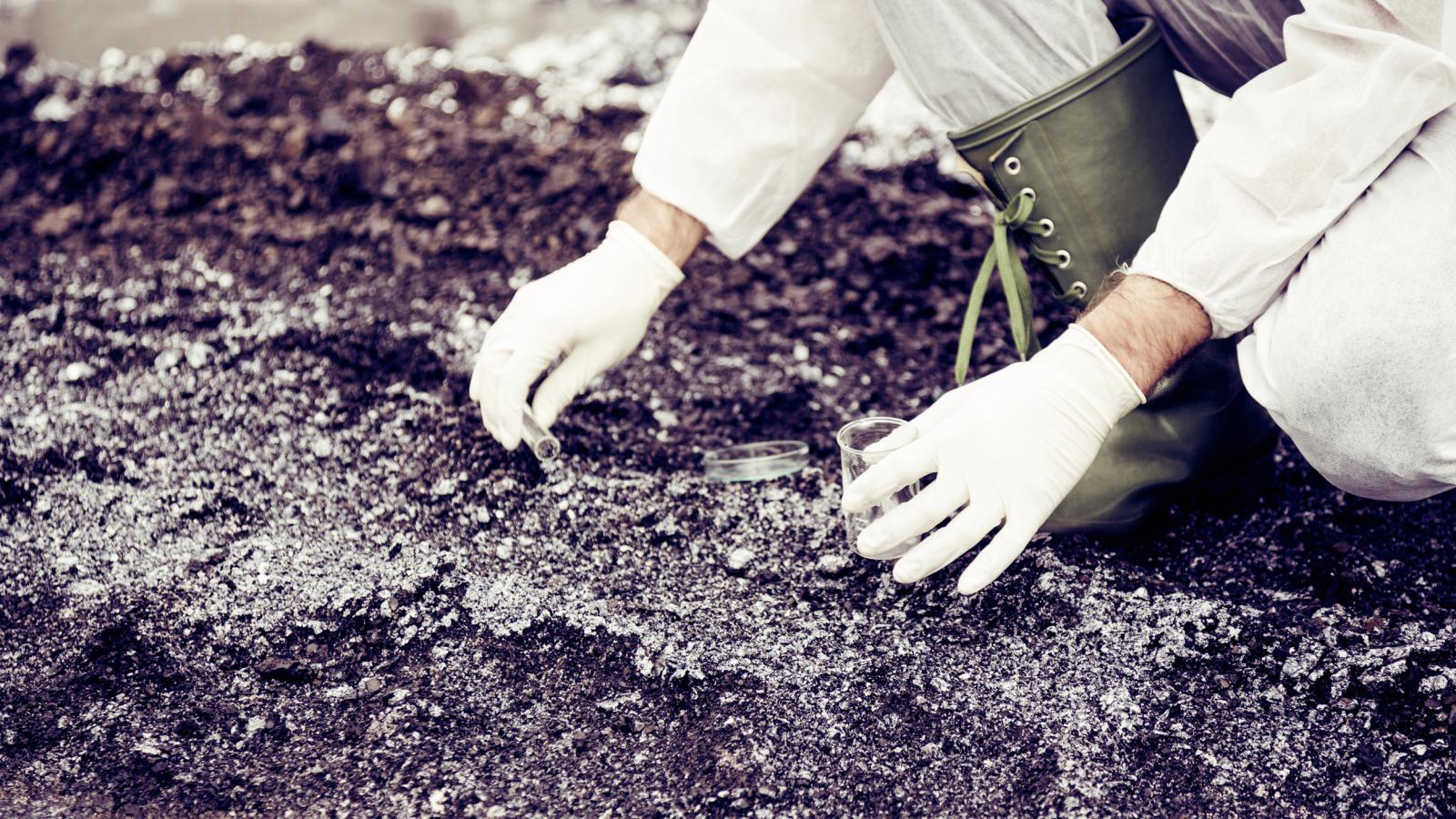NSF-funded community soil testing study focused on Troy, New York and Tierra Amarilla, Chile
September 10, 2019

If you live in an industrial-era urban setting, chances are that soil in your vicinity is contaminated with lead, arsenic, or other heavy metals. With support from the National Science Foundation, a team of researchers is developing a “citizen science” soil research project in Troy, New York and Tierra Amarilla, Chile that engages residents in greater understanding of contaminants in their midst and strategies for protecting public health.
“We don’t tend to think of lead contamination in soil as a dangerous pathway to exposure, but we’re actually surrounded by soil, especially gardeners and children who play outside. We track soil into our homes, where it becomes dust,” said principal investigator Abby Kinchy, a professor of science and technology studies at Rensselaer Polytechnic Institute. “Our goal for this project is to raise awareness of this issue while re-envisioning what it means for people to participate in environmental monitoring in a way that’s action oriented.”
Kinchy said lead and arsenic soil pollution is documented in several cities in New York state. In older cities, like Troy, heavy metals in soils may have come from demolition of older buildings containing lead paint and products, decades of combustion of leaded gasoline, and the multiple industries that once operated in the city. In Chile, urban soil contamination is commonly the result of the mining industry. Soil can be tested for contamination in laboratories, but do-it-yourself options are limited.
“Even if you paid for a test, there’s a whole set of questions that people need to think about before, during, and after soil testing: where did it come from? How can you realistically protect against exposure? Is someone responsible for cleaning it? Is there law and policy on this issue, and if not, how can you change that?” Kinchy said. “Because otherwise, all you’ve done is find out about a potentially damaging material in your environment, with no understanding of how to address that.”
As part of addressing those shortfalls, the project will develop a Community Soil Study Toolkit that includes do-it-yourself arsenic and lead tests as well as activities that will help groups to contextualize and act on the test results.
“We’re developing a new method of engagement that ultimately will design and implement a community soil testing study in Troy and in Chile where we will try to situate these soil sampling and testing processes in a much larger process of social inquiry with the participants,” Kinchy said.
The project is supported by a two-year $507,284 NSF grant. Joining Kinchy on the project are arts professor Kathy High at Rensselaer, sociologist Sebastián Ureta at Universidad Alberto Hurtado in Santiago, Chile, environmental scientist Mónica Ramírez-Andreotta at the University of Arizona, and geographer Salvatore Engel-Di Mauro at SUNY New Paltz. The project forges a connection with the “Nuestros Suelos” (Our Soil) project led by Professor Ureta in Chile, which promotes international circulation of knowledge and techniques for community engagement.
“Conceiving of a project that is simultaneously local and global, Professor Abby Kinchy’s work shows how the social sciences can help to improve the ways that people know and relate to soil,” said Nancy Campbell, head of the Rensselaer Department of Science and Technology Studies. “I am very proud that this DIY soil testing project was funded to nurture community building in the City of Troy as well as Chilean communities.”
Kinchy, a sociologist, is an expert in citizen science – research that involves data collection and analysis by the general public – whose forthcoming book, Science By The People, analyzes the tensions and dilemmas that citizen science projects commonly face. Her previous research has focused largely on volunteer water-quality monitoring efforts. In the book, Kinchy and co-author Aya Kimura draw on examples from citizen science projects investigating natural gas drilling, radioactive contamination, and genetically engineered crops to show the shared dilemmas relating to austerity pressures, presumed boundaries between science and activism, and difficulties moving between scales of environmental problems.
Having studied the drawbacks of traditional citizen science models, Kinchy is eager to develop a more collaborative approach through this latest project.
“The project will make it possible for communities to investigate soil contamination in their own neighborhoods, understand pathways for exposure, and discover the social and political dimensions of soil pollution and cleanup,” said Kinchy. “As a sociologist who studies science and technology, it has been my dream for a really long time to be involved in a research project that requires scientific and engineering knowledge, but is led by sociological research questions.”
Campbell praised Kinchy’s project for demonstrating the interdisciplinary nature of research at Rensselaer.
“Science and Technology Studies research exemplifies the spirit of The New Polytechnic at Rensselaer, grounding it in direct engagement with sociological questions as well as sociotechnical knowledge making,” Campbell said. “In STS, we call this approach ‘Making and Doing,’ and this project embodies that approach.”